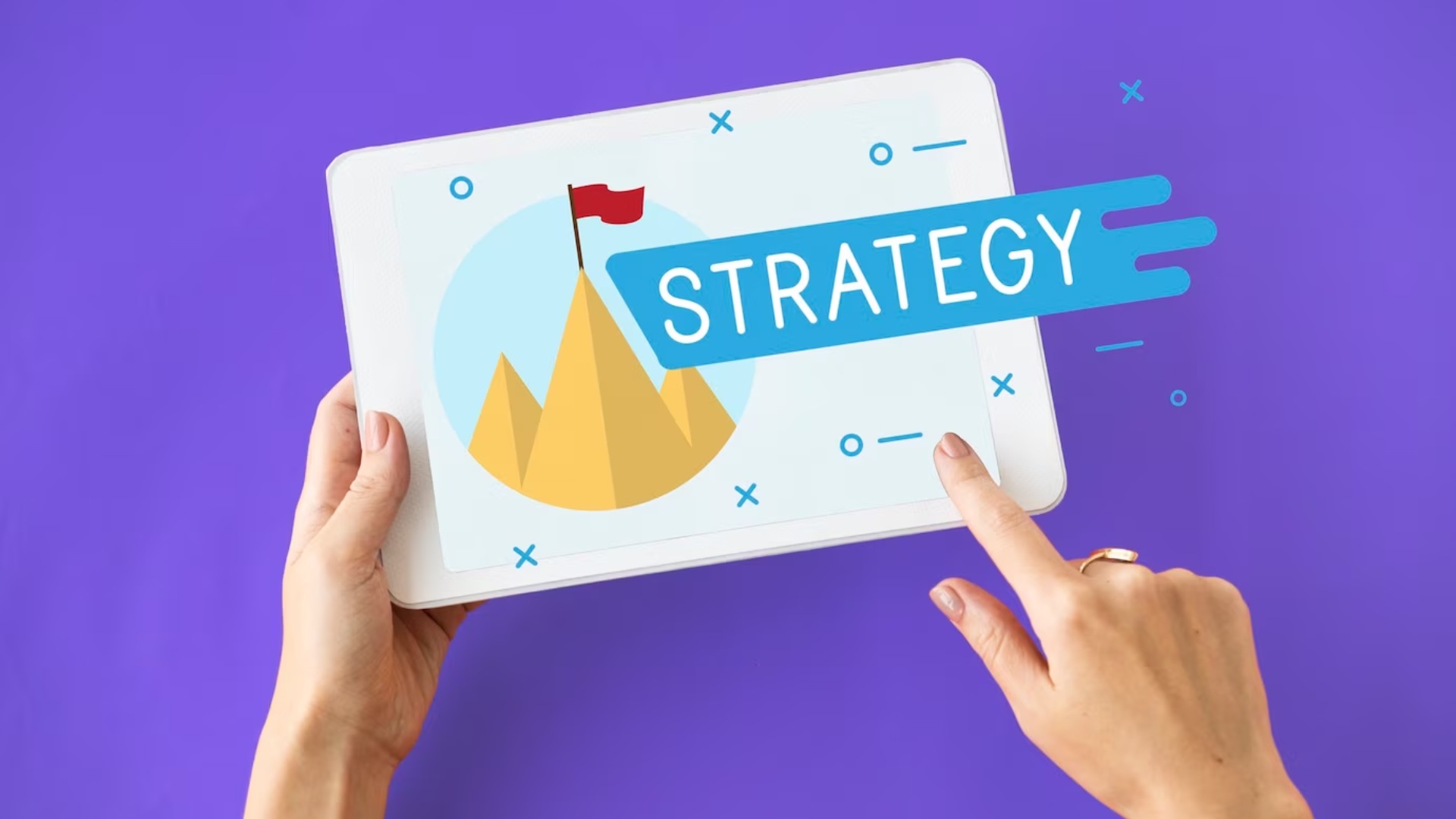Drive More Sales With These 7 eCommerce Growth Strategies
With the digital shopping landscape evolving faster than ever, staying ahead of the curve is your ticket to success. eCommerce growth isn’t just about making a few extra bucks – it’s about ensuring your business survives and thrives in this competitive arena.
The following strategies are the keys to unlocking your eCommerce store’s full potential. We’ll cover everything from optimizing your website for search engines to harnessing the power of data analytics.
1. Optimize Your Website for SEO: Boosting Your Online Visibility
In this chapter, we will discuss how optimizing your website for search engines can be a game-changer for your eCommerce growth.
If you need help, we can build your authority in search using our proven SEO strategy, optimize your content, and measure real return on investment.
On-Page SEO Techniques
Now, let’s dig into the on-page SEO techniques that can turn your website into a magnet for organic traffic.
1. Keyword Research and Optimization: People type these words and phrases into search engines when looking for products like yours. Your job? Find the keywords that matter most to your business and sprinkle them strategically throughout your website. It’s like leaving breadcrumbs for search engines to follow and lead customers to your products. Important to know: over 29% of keywords with over 10K+ monthly searches consist of 3+ words, and pages with URLs that contain a keyword have a 45% higher CTR.
2. Content Quality and Relevance: Content is king, and quality content reigns supreme in SEO. Create engaging product descriptions, blog posts, and informative pages that showcase your offerings and provide value to your audience. When your content is top-notch, search engines take notice, and so do potential buyers. Also, consider using video: over 80% of marketers agree that video content has become “more important” than ever.
3. URL Structure and Optimization: Clean and organized URLs aren’t just good for SEO; they’re user-friendly too. Optimize your website’s URL structure to make navigating easier for search engines and visitors. Think of it as putting up clear signposts in a shopping mall – it helps everyone find what they’re looking for. URLs on the first page of Google results are about 66 characters long. But shorter lengths do better than longer ones. For instance, URLs that rank at the #1 position are 9.2 characters shorter than URLs in the #10 positions.
See why on-page SEO is important + on-page SEO checklist
Off-Page SEO Strategies
Now, let’s venture into the world of off-page SEO, where your website’s reputation beyond its borders matters.
1. Link Building and Backlink Analysis: Imagine backlinks as recommendations from other websites saying, “Hey, check out this eCommerce store; they’ve got great stuff!” Building a network of high-quality backlinks tells search engines that your website is trustworthy and authoritative. On Google, high-quality link-building makes up 30% of your page score, and a single link from a high-quality domain will be valued more than several links from low-quality domains – that’s why a solid link-building strategy is so important.
2. Social Media Presence and Impact: Social media isn’t just a place to share memes and cat videos; it’s a goldmine for boosting your eCommerce SEO. Maintaining an active and engaging social media presence can drive traffic to your website and improve your search engine rankings. Plus, when people like, share, and talk about your products on social platforms, it sends positive signals to search engines.
Optimizing your website for SEO isn’t just about climbing the search engine ranks; it’s about making your eCommerce business more discoverable, credible, and, ultimately, profitable.
See why off-page SEO is important + off-page SEO tips
2. Improve Website Performance

Let’s talk about something that can significantly impact your eCommerce success – website performance. In this chapter, we’ll explore the importance of a speedy and well-optimized website.
Site Speed and Its Impact on Sales
How frustrating is it when a website takes forever to load? Well, your customers feel the same way. Slow-loading pages can send potential buyers running for the hills – or, in this case, to your competitors’ websites. Studies show that seventy percent of consumers indicate that page speed influences their purchasing decisions from online retailers.
To ensure your website is as fast as lightning, focus on optimizing images, reducing unnecessary scripts, and investing in reliable hosting. The goal? To create a seamless shopping experience that keeps customers clicking that “Add to Cart” button.
Mobile Optimization and Responsive Design
Mobile devices are always there, ready to help users explore your products. That’s why mobile optimization and responsive design are essential to website performance.
Responsive design ensures that your website looks and functions beautifully on screens of all sizes – from smartphones to tablets and desktops. When your site is mobile-friendly, you’re meeting the needs of on-the-go shoppers and pleasing search engines like Google, which reward mobile-friendly sites with higher rankings. A mobile-friendly website can increase the chances of 74% of online users returning to it.
Learn how to capitalize on M-Commerce to grow your business
Reducing Cart Abandonment Rates Through Performance Improvements
Have you ever had a customer load up their shopping cart only to abandon it at the last minute? Cart abandonment is the nemesis of eCommerce, but good website performance can come to the rescue. The latest shopping cart abandonment rates show that in July 2023, 70.72% of all online shopping carts failed to reach the checkout stage.
Fast-loading pages, an easy and secure checkout process, and clear calls to action can significantly reduce cart abandonment rates. Plus, improvements in website performance can boost trust and confidence in your brand, making customers more likely to complete their purchases.
Improving your website’s performance isn’t just about making it faster; it’s about creating a smooth, user-friendly experience that turns visitors into loyal customers.
We build spot-on business websites and eCommerce platforms, keeping a close eye on functionality, design, and SEO.
3. Utilize Social Media Marketing: Turning Likes into Sales
Social media has become the bustling marketplace of the digital age. It’s where people hang out, share stories, and, yes, shop for products. According to online data shared by Statista, it’s estimated that 2023 sales via social media platforms worldwide will increase to $1.298 billion. In this chapter, we’ll explore the incredible potential of social media marketing in the eCommerce world.
Learn how to build a social media strategy
The Power of Social Media in eCommerce
Imagine having a storefront open 24/7 and accessible to billions of potential customers worldwide – that’s the power of social media in eCommerce. It’s not just about posting pretty pictures; it’s about building a thriving community of brand enthusiasts and turning them into loyal customers.
Social media platforms are like different neighborhoods, each with its vibe and crowd. You must choose the right platform(s) for your business to succeed. Let’s dive into this next.
Choosing the Right Social Media Platforms
Facebook, Instagram, X, TikTok – the list goes on. But which platforms should you focus on? Well, it depends on your target audience. Are you selling fashion to millennials? Instagram might be your go-to. Are you selling tech gadgets? You’ll find your audience on X and YouTube. Understanding your customers’ preferred hangouts is critical to reaching them effectively.
Creating Engaging Content and Ads
On social media, content is king, and engagement is the crown jewel. Creating engaging content means telling your brand’s story in a way that resonates with your audience. It’s about sparking conversations, sharing valuable insights, and occasionally showcasing your products.
Social media ads are your secret weapon. They allow you to target specific demographics, interests, and behaviors. Craft compelling ad campaigns that grab attention, whether a carousel of your best-sellers or a video demonstrating your product’s awesomeness.
Leveraging Influencer Marketing
Influencers are the rock stars of social media and can be your best allies. Collaborating with influencers who align with your brand can introduce your products to a broader and more engaged audience, especially as 61% of consumers trust influencers’ recommendations.
4. Implement Email Marketing: Your Direct Line to Customers

Email marketing is like having a direct line to your customers’ hearts and wallets. In this chapter, we’ll explore the art of email marketing and how it can work wonders for your eCommerce business.
Building and Segmenting Email Lists
Think of your email list as a treasure trove of potential customers. But first, you need to build it. Encourage website visitors to subscribe by offering incentives like discounts or exclusive content. Once you’ve got your list, don’t treat everyone the same. Segment it!
Segmentation is like sorting your contacts into buckets based on their preferences, behaviors, or purchase history. Subscriber segmentation is the most effective email marketing campaign strategy, with segmented email campaigns causing a 760% increase in revenue and having 100.95% more clicks than non-segmented emails globally.
This allows you to send tailored messages that resonate with each group. It’s all about making your emails relevant and engaging.
Personalized Email Campaigns
Personalization is the secret of email marketing. When your customers receive emails that feel like they were crafted just for them, it creates a connection. Use the recipient’s name, recommend products based on their past purchases, and send personalized offers. The goal is to make every email feel like a one-on-one conversation.
62% of marketers say personalization is the most effective technique, with emails with personalized subject lines generating 50% higher open rates. Moreover, 58% of revenue is generated thanks to segmented and personalized emails.
Abandoned Cart Recovery Emails
Cart abandonment is the heartache of eCommerce, but don’t despair. Abandoned cart recovery emails can win those customers back. According to statistics, 60% of shoppers returned to complete their purchase after receiving a personalized abandoned cart email, and around 75% planned to return later.
Send a friendly reminder about the items left behind, and sweeten the deal with incentives like free shipping or a discount code. It’s like a gentle nudge to complete the purchase.
Customer Retention Through Email Marketing
Email marketing isn’t just about attracting new customers; it’s also a powerful tool for retaining existing ones – 80% of business professionals believe it increases customer retention. Keep your customers engaged with valuable content, loyalty programs, and special offers. Remember, a happy customer is likely to become a repeat buyer and a brand advocate.
Email marketing is your digital Swiss army knife for building relationships, boosting sales, and keeping your eCommerce brand top-of-mind. So, let’s craft those emails that customers can’t resist opening!
5. Enhance Customer Experience: Your Path to Happy Customers
Creating a memorable customer experience isn’t just a nice-to-have; it’s a must-have in eCommerce. In this chapter, we’ll explore how enhancing the customer experience can boost your online store’s success.
Importance of a User-Friendly Website
Imagine walking into a cluttered, poorly lit store with items strewn everywhere. Chances are, you’d turn around and leave. Your website is your digital storefront and should be inviting, organized, and user-friendly. A clean design, easy navigation, and clear product descriptions are like a warm welcome to your customers.
Remember, a user-friendly website keeps visitors around and encourages them to explore and purchase. It’s the foundation of a positive customer experience.
Providing Excellent Customer Support
Excellent customer support is the backbone of eCommerce success. Whether answering questions promptly, resolving issues, or providing guidance, your support team plays a vital role in keeping customers happy. Make sure you have clear contact information and multiple channels for customers to reach you.
It’s important to note that 27% of people said that being unable to reach customer support through their chosen channel contributes to a negative customer experience, and 68% of US consumers currently use, or would like to use, social media to engage with brands to ask questions before making a purchase, while 59% of consumers expect to do so to get post-purchase customer support.
Customers remember outstanding service and are likely to become loyal advocates for your brand. It’s all about building trust and long-lasting relationships.
Personalization and Recommendation Engines
Have you ever noticed how Amazon suggests products you might like based on your browsing history? That’s the magic of personalization and recommendation engines. You can offer tailored product recommendations, emails, and special offers by analyzing customer data and behavior. This not only increases sales but also makes customers feel understood and valued.
Companies that grow faster drive 40% more of their revenue from personalization than their slower-growing counterparts, and 59% of customers believe that personalization based on previous interactions is critical to retaining their business.
Streamlining the Checkout Process
Picture this: a customer is ready to purchase, but the checkout process is so convoluted that they abandon their cart. It’s a scenario you want to avoid. Streamlining the checkout process means minimizing the steps and information required to purchase. Offering multiple payment options, including guest checkout, and ensuring the mobile-friendly process can significantly reduce cart abandonment rates.
Enhancing the customer experience isn’t a one-time effort; it’s an ongoing commitment to making your eCommerce store where customers love to visit and shop. It’s about creating a seamless, enjoyable journey from when they land on your site to the checkout.
6. Embrace Data Analytics: Turning Numbers into eCommerce Gold
In the digital age, data is king, and if you’re not tapping into its power, you’re missing out on growth opportunities. In this chapter, we’ll dive into data analytics and how it can supercharge your eCommerce business.
Collecting and Analyzing eCommerce Data
Data is all around us, and in eCommerce, it’s like a gold mine waiting to be explored. Start by collecting data on your website visitors, behavior, and purchases. Tools like Google Analytics and eCommerce-specific platforms can help you gather this treasure trove of information.
Once you have the data, the real magic begins with analysis. You’ll be able to identify trends, customer preferences, and areas where you might lose potential sales.
Utilizing Data for Decision-Making
Data isn’t just for number crunchers; it’s for decision-makers. By studying your eCommerce data, you can make informed decisions about product offerings, marketing strategies, and customer targeting. For example, if the data shows that a particular product category is booming, you can allocate more resources and marketing efforts.
Data-driven decisions lead to smarter, more profitable choices.
A/B Testing and Optimization
Have you ever wondered which color of your “Buy Now” button performs better? A/B testing is your answer. It’s a process where you test different versions of a webpage, email, or ad to see which one performs best. This experimentation allows you to optimize your website, emails, and marketing campaigns for maximum impact.
A/B testing ensures you’re not just guessing but making data-backed improvements that drive results. It’s like fine-tuning an instrument to create the perfect melody.
Predictive Analytics for Sales Forecasting
Predictive analytics is the art of using historical data to forecast future sales and trends. By analyzing past customer behavior and market conditions, you can make educated guesses about what products will sell well and when. It’s like having a weather forecast for your sales – you’ll know when to batten down the hatches or seize the sunny opportunities.
In conclusion, embracing data analytics is like having a superpower for your eCommerce business. It empowers you to make informed decisions, optimize your strategies, and see into the future of your sales.
7. Invest in Paid Advertising: Powering Up Your eCommerce Visibility
Paid advertising is your turbo boost to eCommerce success. In this chapter, we’ll explore paid ads and how they can accelerate your online business growth.
PPC Advertising for eCommerce
PPC allows you to display ads on search engines and other platforms, and you only pay when someone clicks on your ad. 50% of people arriving at a retailer’s site from paid ads are more likely to buy than those from an organic link. It’s like having billboards on the busiest highways, and you only pay for the people who stop to take a look.
PPC can put your products in front of potential customers actively searching for what you offer. It’s a targeted and cost-effective way to drive traffic and sales.
Google Ads and Shopping Campaigns
When it comes to PPC, Google Ads is the heavyweight champion. It’s like having your store right at the top of Google’s search results. It’s important to note that 89% of the traffic generated by Google Ads is not replaced by organic clicks when ads are paused, underlining the importance of it.
Google Shopping Campaigns take it a step further by showcasing your products with images and prices, making it easy for shoppers to make quick buying decisions. Mastering Google Ads and Shopping Campaigns can be a game-changer but requires strategic keyword targeting and effective ad creation.
Facebook and Instagram Ads
Social media giants like Facebook and Instagram offer a treasure trove of advertising opportunities. You can create visually appealing ads in users’ newsfeeds, stories, and direct messages.
The key here is targeting. You can narrow your audience based on demographics, interests, and behaviors to ensure your ads reach the right people at the right time.
Budget Allocation and ROI Measurement
Investing in paid advertising requires a well-thought-out budget strategy. Determine how much you’re willing to spend on each platform and campaign. It’s like deciding how much fuel you need for a journey; you want to ensure you have enough to reach your destination.
ROI (Return on Investment) is your compass in paid advertising. It’s essential to track and measure the performance of your ads to ensure you’re getting a positive return. Tools and analytics platforms can help you determine which ads drive sales and which need tweaking.
In conclusion, paid advertising can catapult your eCommerce business into the spotlight. It’s about reaching your target audience, where they spend their time, and converting clicks into customers.
Conclusion
Now that you’ve equipped yourself with these eCommerce growth strategies, it’s time to implement them. Remember that Rome wasn’t built in a day, nor is eCommerce success. Stay committed, track your progress, and be prepared to adapt as you go.
The world of eCommerce is vast, dynamic, and full of opportunities. Your eCommerce business can achieve remarkable growth with the right strategies and a commitment to excellence. Remember that every step you take, no matter how small, brings you closer to your goals.













